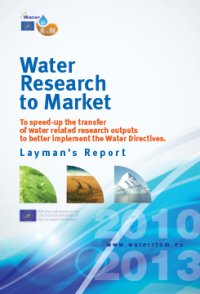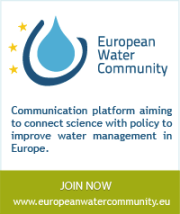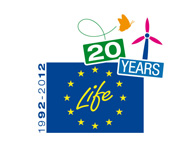ERPISA
| Output characterisation | |
| OUTPUT SENTENCE | Methodology for assessment and remediation of aquifers |
| OUTPUT TYPE | methodology |
| WATER TOPIC | Quality of natural systems |
| KEYWORDS | surface water and groundwater, Quality of natural systems |
| KEYWORDS TYPE | Methodology |
| MARKET NEED TAILORED |
|
| OUTPUT DESCRIPTION | Direct quantifiable results: • a coherent and rigorous characterization and assessment system of groundwater quality; • define the parameters that determine vulnerability to pollution of groundwater resources; • establish parametres, ranking their importance, needed to characterize polluted aquifer layers: hydrogeological, hydraulic, chemical, biological; • establish feasibility criteria to define levels and techniques of remediation; • define the criteria necessary in selecting and sizing a local system of addressing groundwater quality to reduce chemical consumption by using modern new methods, of biotechnology and bioremediation, of natural attenuation of hazardous chemical compounds concentrations present in the groundwater |
| STATE OF DEVELOPMENT |
|
| INNOVATIVE ASPECTS AND ADVANTAGES |
|
| INTELLECTUAL/INDUSTRIAL PROPERTY RIGHTS |
|
| TRANSFERABILITY | The results are applicable in any area where groundwater is contaminated with oil products |
| POTENTIAL USERS/CLIENTS |
|
| Estimation of risks | |
| EVALUATION OF RISKS FOR OUTPUT USERS | Low risks because the output it is a methodology which identifying the appropriate solution for remediation of historical pollution |
| ECONOMICAL RISKS | ? ? |
| TECHNICAL RISKS | Application on other sites involves analysis of the compatibility parameters involved in remedial process |
| Steps ahead | |
| NEXT STEPS TO ACHIEVE THE STATUS 'READY TO USE' | Depending on site conditions |
| TYPE OF PARTNER FOR THE NEXT DEVELOPMENTS | SMEs / companies, research organizations, government pool, service operators, others |
| TASKS TO BE PERFORMED | Industrial scale pilot plants |
| COLLABORATION DETAILS | Technical cooperation |
| Estimation of ressources | |
| RESOURCES FOR NEXT STEPS |
|
| FORESEEN COSTS FOR NEXT STEPS | Depending on site conditions |
| Contact | |
| TECHNICAL CONTACT | Phd. eng. Nicolae ALBOIU |
| COUNTRY | ROMANIA |
| WEBSITE | http://hidraulica.utcb.ro/chpm/ |
| WATER RTOM CONTACT | CFPPDA |
| Background | |
| PROJECT NAME | Assessment and Remediation of historical pollution of layers of aquifers by unconventional technologies |
| PROJECT ACRONYM | ERPISA |
| PROJECT DESCRIPTION | Direct quantifiable results: ?• a coherent and rigorous characterization and assessment system of groundwater quality; ?• define the parameters that determine vulnerability to pollution of groundwater resources; ?• establish parametres, ranking their importance, needed to characterize polluted aquifer layers: hydrogeological, hydraulic, chemical, biological; ?• establish feasibility criteria to define levels and techniques of remediation; ?• define the criteria necessary in selecting and sizing a local system of addressing groundwater quality to reduce chemical consumption by using modern new methods, of biotechnology and bioremediation, of natural attenuation of hazardous chemical compounds concentrations present in the groundwater; |
| LEADER | Technical University of Civil Engineering Bucharest |
| TEAMS INVOLVED | 1. Technical University of Civil Engineering Bucharest ?2. The National Institute for Research and Development in Environmental Protection – INCDPM ?3. National Research and Development Institute for Industrial Ecology-INCD ECOIND ?4. Institute of Biology |
| COUNTRIES INVOLVED | ROMANIA |
| PROJECT LOCATION | RO |
| FUNDING ORGANISATION | CEEX |




